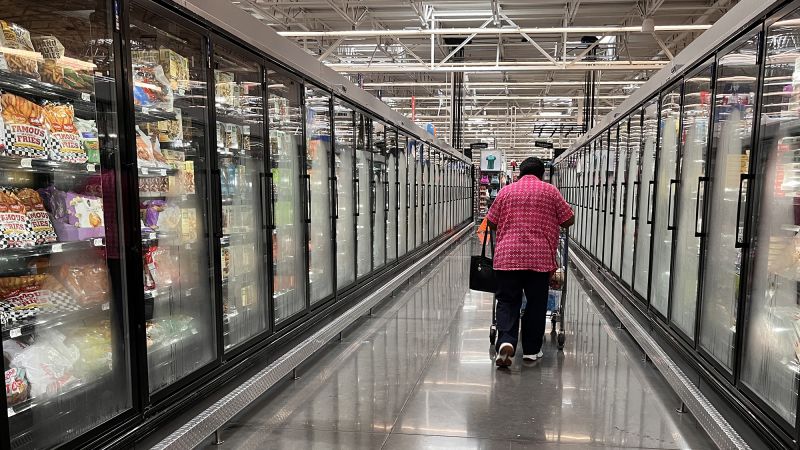The economic narrative surrounding former President Donald Trump’s campaign last year promised a simple solution to a complex issue: significantly lower prices for American consumers effective immediately. However, as the calendar ticks away to Day 115 of his administration, reality appears to tell a different story. Instead of the promised reductions, the economy shows significant signs of inflationary pressures, suggesting that the campaign’s rosy predictions are proving to be unfounded.
On a rather telling Thursday, a multitude of economic indicators emerged, all underscoring a single prevailing trend: prices are on the rise. The world’s largest retailer, Walmart, illustrated this phenomenon most vividly. This corporate giant is well-equipped to handle the impacts of tariffs due to its massive scale and supplier leverage. However, Walmart’s recent announcement highlighted that U.S. tariffs — taxes imposed on imported goods — are unsustainable at their current levels, compelling the company to increase prices.
CEO Doug McMillon voiced concerns during an earnings call, stating, “The higher tariffs will result in higher prices.” This straightforward admission sheds light on the broader economic landscape, which stands in stark contrast to the administration’s narrative that tariffs would be absorbed without significantly impacting consumers. Notably, there’s an inherent risk for Walmart in making such a public connection between price hikes and tariff policies, primarily because historical precedents dictate that such revelations often incite the ire of political leaders, including the former president.
The root of this adverse economic trend lies in the imposition of tariffs, set initially at 10%, creating a financial burden that ultimately falls on American importers and consumers alike. Critics argue that an increase in the costs of goods is inevitable when tariffs are applied indiscriminately to a wide array of imports. Many consumers may dismiss recent price hikes due to the availability of stock items at major retail outlets like Walmart, Target, and Home Depot. However, a looming reality awaits as these companies deplete their stockpiles of cheaper goods purchased prior to the tariff increases.
As inventories dwindle, retailers will be obliged to offer newer, more expensive products that have been affected by recent tariff policies, which, for Walmart specifically, is expected to manifest in the coming weeks. While businesses have managed to absorb some costs, recent data from the Producer Price Index (PPI) indicates a decline in wholesale prices—not because the economic outlook is bright, but because producers and retailers have started to suffer diminishing profit margins.
Similarly, consumer behavior reflects this growing economic anxiety. Many shoppers rushed to make significant purchases right before the tariffs took effect, but now their spending habits are contracting more than anticipated. The latest consumer spending data, revealing a meager year-over-year increase of just 0.1% for April, underscores the tightening of households’ budgets.
Taken collectively, these trends illustrate the tangible impact of trade policies on both businesses and consumers. The initial economic confidence, once high, has significantly waned, aligning public sentiments with the hard data reflecting challenges ahead. Joe Brusuelas, chief economist at RSM US, noted the shifting economic landscape, stating that there’s no escaping the reality that trade policies are now affecting both company revenues and profit margins.
Adding to the grim economic forecast, prominent financial leaders have been vocal about concerns regarding future economic stability. Jamie Dimon, the head of JPMorgan Chase, warned about the potential for an impending recession, suggesting that America’s status as the global financial haven may be under threat. Additionally, Federal Reserve Chair Jerome Powell highlighted the increasing frequency of “supply shocks” that could result in volatile pricing and added complexity to monetary policy.
Despite these sobering insights, there have been a few bright spots in the economy, with certain goods, such as eggs and airfare, experiencing price reductions. However, these decreases often reflect waning consumer demand, suggesting a retreat from discretionary spending habits.
As the economic climate shifts, the following week promises to reveal further insights as Target, Home Depot, and Lowe’s prepare to disclose their earnings and financial forecasts. The anticipation surrounding consumer sentiment surveys may also shed light on whether recent geopolitical developments with China can spark any optimism in an otherwise subdued economic atmosphere. Yet, as of now, it appears that the economic challenges posed by tariffs and rising costs are far from resolved, painting a concerning picture for the American consumer and the broader economy moving forward.



